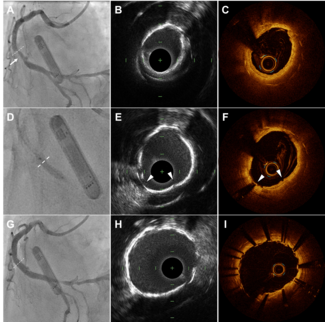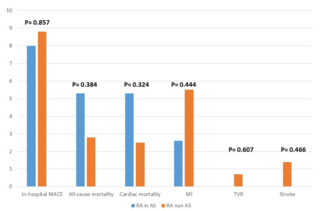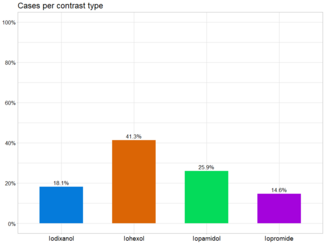Tenecteplase-Assisted Transapical Drainage of Tuberculous Pyopericardium
© 2025 HMP Global. All Rights Reserved.
Any views and opinions expressed are those of the author(s) and/or participants and do not necessarily reflect the views, policy, or position of the Journal of Invasive Cardiology or HMP Global, their employees, and affiliates.
J INVASIVE CARDIOL 2025. doi:10.25270/jic/25.00071. Epub April 7, 2025.
A 35-year-old man with human immunodeficiency virus/acquired immunodeficiency syndrome (HIV/AIDS) and a CD4 count of 61 cells per mm3 (normal range: 500-1200 cells/mm3) presented with worsening shortness of breath and orthopnoea over the previous 2 days. He also complained of night sweats and fever for the preceding 1 month. He denied cough, expectoration, or haemoptysis.
Physical examination revealed a heart rate of 110 beats per minute and a blood pressure of 88/56 mm Hg. Cardiovascular examination was significant for an elevated jugular venous pressure, an untraceable point of apical impulse, and muffled heart sounds. Initial bedside chest radiography (Figure A) revealed apparent cardiac enlargement with a money-bag appearance, suggesting a possible pericardial effusion. Urgent bedside 2-dimensional (2D) echocardiography demonstrated a large loculated pericardial effusion with a diameter of 4.5 cm lateral to the left ventricle, with features suggestive of early tamponade. The effusion appeared brightly echogenic and loculated around the left ventricle, suggestive of pyopericardium (Figure B [yellow arrow], Video 1). Computed tomography of the chest showed thick pericardial effusion predominately lateral to the left ventricle and along the right atrium, with minimal effusion anterior to the right ventricle (Figure C). Additionally, access for pericardiocentesis appeared possible only through the left ventricular apex.
The patient was taken for emergency pericardiocentesis, and, following transapical pericardial sheath placement, a contrast injection confirmed a loculated pericardial effusion around the left ventricular apex (Figure D, Video 2). We had difficulty in aspiration by s 6-French pigtail and, owing to purulent nature and near complete loculation, intrapericardial thrombolysis to facilitate pericardiocentesis was considered (Figure E, Video 3). The patient successfully underwent transapical pericardiocentesis facilitated by 10 mg of intrapericardial tenecteplase instillation, which yielded 800 mL of thick purulent pericardial fluid. Laboratory analysis of the pericardial fluid revealed a rich lymphocytic exudate and grossly elevated adenosine deaminase levels.
Loculated pericardial effusions are often seen in patients with infectious causes of pericarditis due to the presence of densely fibrinous strands in the exudate. This may sometimes necessitate non-conventional therapeutic measures such as unusual access routes (in this case a transapical route) and intracavitary thrombolytic agents to facilitate adhesiolysis for complete drainage. A 2D transthoracic echocardiogram prior to discharge revealed complete resolution of the pericardial effusion with no evidence of pericardial constriction (Video 4). The patient subsequently improved and did well on oral antitubercular and antiretroviral. Follow-up chest radiograph after 8 weeks showed complete resolution of pericardial effusion (Figure F).

Affiliations and Disclosures
Venkatakrishnan Ramakumar, MD, DM1; Durlabhesh Rawat, MD, DM2; Sourabh Agstam, MD, DM2,3
From the 1Department of Cardiology, Dr Rela Institute and Medical Center, Chennai, India; 2Department of Cardiology, Vardhman Mahavir Medical College, New Delhi; 3Department of Cardiology, All India Institute of Medical Sciences, New Delhi, India.
Disclosures: The authors report no financial relationships or conflicts of interest regarding the content herein.
Consent statement: The patient was admitted by SA and DR. A detailed history and examination were performed and images were obtained with the patient’s consent.
Data availability statement: Data and images provided in the manuscript are archived at Safdarjung Hospital, Vardhman Mahavir Medical College, New Delhi, India and can be provided at reasonable request.
Address for correspondence: Sourabh Agstam, MD, DM, Department of Cardiology, 7th Floor, Cardiothoracic Center, All India Institute of Medical Sciences, Ansari Nagar, New Delhi 110029, India. Email: sourabhagstam@gmail.com; X: @AgstamSourabh.


















